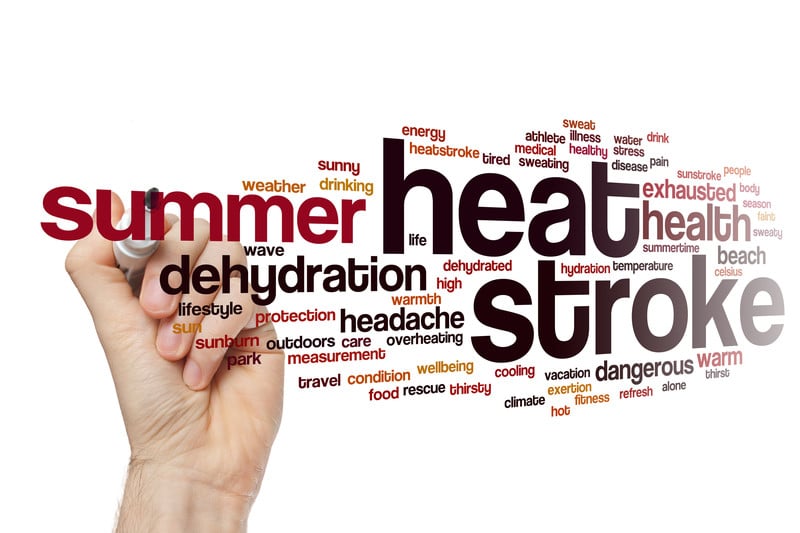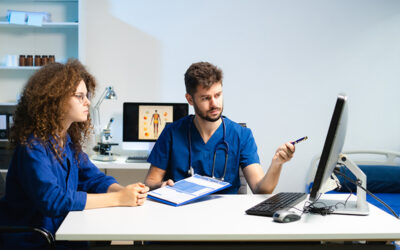With the summer season fast approaching, most people are getting ready for beach trips, outdoor recreations, and other similar activities. However, a number of diseases/ ailments could make life unpleasant and spoil the joy and merriment of summer holidays. This is a period when healthcare providers are often pre-occupied with ailing patients. Reports suggest that the number of conditions treated in the emergency department nearly doubles during the summer in the United States. Physicians’ practices dealing with a large number of patients with summer ailments/diseases need to know the ICD-10 codes to report these conditions correctly. Medical billing services from a reputable medical billing company helps in accurate and timely claim filing for appropriate reimbursement.
Let’s take a look at the ICD-10 codes for some common health problems that occur when the temperature increases –
Sunburn – Sunburn is the term for swollen and painful skin caused due to over exposure to ultraviolet (UV) rays from the sun. A serious risk factor for skin cancer, the extent of sun burn can vary from mild to severe and may depend on the skin type and the amount of exposure to the sun. Common symptoms include – redness and tenderness, blistering, pain, fever, chills and nausea and vomiting. After the sun exposure, the skin may turn red in as little as 30 minutes, but most often it takes 2-6 hours. Treatment for this condition includes – over-the-counter (OTC) pain relief medications such as ibuprofen or other non-steroidal anti-inflammatory medications (NSAIDs) and applying hydrocortisone cream. Applying a sun screen lotion on the exposed areas of the body 20 minutes before heading out in the sun would provide protection from sunburn. The ICD-10 codes for sunburns are –
- L55 – Sunburn
- L55.0 – Sunburn of first degree
- L55.1 – Sunburn of second degree
- L55.2 – Sunburn of third degree
- L55.9 – Sunburn, unspecified
Heat stroke and Heat cramps – Another common summer disease, heat stroke is caused by the body’s failure to regulate body temperature when exposed to excessively high temperatures. Heat cramps on the other hand, refer to the painful and involuntary muscle spasms that occur due to exposure to hot environments. Typical symptoms include difficulty in breathing, rapid pulse, high body temperature and confusion. Drinking adequate liquids and staying in cooler areas would help avoid these heat conditions. Related ICD-10 codes are –
- T67.0 – Heatstroke and sunstroke
- T67.0XXA – Heatstroke and sunstroke, initial encounter
- T67.0XXD – Heatstroke and sunstroke, subsequent encounter
- T67.0XXS – Heatstroke and sunstroke, sequela
- T67.2 – Heat cramp
- T67.2XXA – Heat cramp, initial encounter
- T67.2XXD – Heat cramp, subsequent encounter
- T67.2XXS – Heat cramp, sequela
Prickly heat rashes – A common skin problem among children and adults, prickly heat rashes cause the skin to turn red, along with a warm, stinging, or prickly sensation. The rash may also cause small, raised bumps and blisters. Also called miliaria rubra, these rashes commonly occur in the face, shoulders, and chest. Tiny red bumps and itching on the area of skin that has been exposed to heat and sweat for a long time are common signs of prickly heat. ICD-10 codes for miliaria rubra –
- L74 – Eccrine sweat disorders
- L74.0 – Miliaria rubra
- L74.1 – Miliaria crystallina
- L74.2 – Miliaria profunda
- L74.3 – Miliaria, unspecified
- L74.4 – Anhidrosis
Food Poisoning – Reports from the United States Department of Agriculture (USDA, 2017) found that rates of foodborne illness peak during the summer, when it is between 90 and 110 degrees Fahrenheit. Warm weather encourages bacteria to multiply. Food that is prepared in advance and allowed to stand in the heat creates the perfect conditions for contamination and food poisoning. Therefore, pre-prepared food should be handled hygienically, stored safely and kept cool if possible. Make sure, especially in hot weather, to refrigerate any food that can possibly spoil right away. Common symptoms of food poisoning include vomiting, abdominal pain, diarrhea, fever, and headaches. Most cases of food poisoning can be easily treated at home. However, if symptoms are severe, patients need to be admitted to hospital for a few days and will be given intravenous hydration. ICD-10 codes related to food poisoning include –
- A05 – Other bacterial foodborne intoxications, not elsewhere classified
- A05.0 – Foodborne staphylococcal intoxication
- A05.1 – Botulism food poisoning
- A05.2 – Foodborne Clostridium perfringens [Clostridium welchii] intoxication
- A05.3 – Foodborne Vibrio parahaemolyticus intoxication
- A05.4 – Foodborne Bacillus cereus intoxication
- A05.5 – Foodborne Vibrio vulnificus intoxication
- A05.8 – Other specified bacterial foodborne intoxications
- A05.9 – Bacterial foodborne intoxication, unspecified
Lyme disease – Regarded as the most common insect-borne disease in the US, Lyme disease peaks during the summer months when people are exposed to ticks in yards and woods. Lyme disease is caused by the bacterium “Borrelia burgdorferi” and is transmitted to humans through the bite of infected blacklegged ticks. Typical symptoms include – fever, headache, fatigue, and a characteristic skin rash called erythema migrans. For reimbursement purposes, report the following codes –
-
- A69.2 – Lyme disease
- A69.20 – Lyme disease, unspecified
- A69.21 – Meningitis due to Lyme disease
- A69.22 – Other neurologic disorders in Lyme disease
- A69.23 – Arthritis due to Lyme disease
- A69.29 – Other conditions associated with Lyme disease
- A69.2 – Lyme disease
One of the primary reasons behind the outbreak of these diseases during summer is the presence of favorable weather conditions for bacteria and other viruses to breed. Therefore, it is important to keep your premises clean. People who happen to spend a lot of time outdoors are at more risk of summer ailments and hence should take adequate preventative measures. The best and simplest way to avoid these diseases is to stop activities outside the home during peak sun hours and avoid exposure to direct sunlight. Other ways to be sun-safe are to – increase the intake of water or liquid to prevent dehydration, use sunscreen with a higher SPF to prevent skin damage, avoid roadside food or contaminated water and wear light-colored, loose, cotton clothing.
Summer is a beautiful time to enjoy vacations and spend time with family and friends. All that you need to do is to stay healthy, become aware about the outbreak of these diseases and take extra precautions to enjoy the good times.
Healthcare providers must know the highly specific ICD-10 codes related to documenting common summer ailments. Medical billing companies can provide the necessary medical coding and billing support physicians are looking for, and ensure accurate and timely claim submissions.




